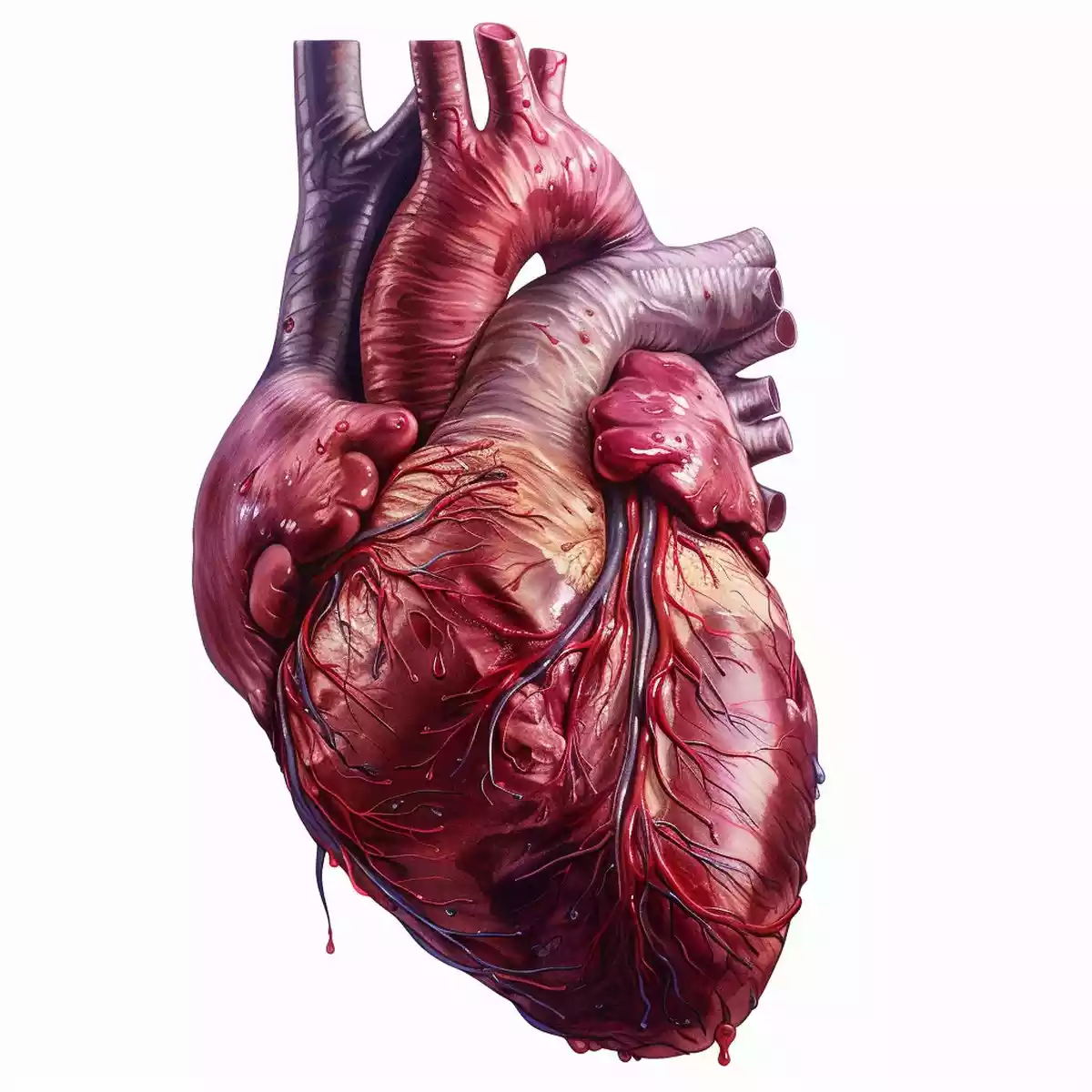
Cardiovascular complications have emerged as a significant concern in COVID-19 patients, with recent studies shedding light on the potential long-term impacts of the virus on heart health. While SARS-CoV-2 primarily targets the respiratory system, mounting evidence suggests that the virus can also cause damage to the cardiovascular system, leading to a range of complications. In this article, we will delve into the findings of a comprehensive review by Shao and Yin, titled “Pathogenic mechanisms of cardiovascular damage in COVID-19,” published in Molecular Medicine in 2024.
COVID-19, caused by the severe acute respiratory syndrome coronavirus 2 (SARS-CoV-2), has become a global pandemic, affecting millions of people worldwide. Although the virus is known to cause respiratory illness, it has become increasingly clear that COVID-19 can also lead to cardiovascular complications, even in patients with no pre-existing heart conditions.
The relationship between COVID-19 and cardiovascular health has been a topic of intense research since the early days of the pandemic. According to Shao and Yin, “COVID-19 may directly exacerbate pre-existing heart disease and frequently induce new cardiovascular complications” (“Pathogenic mechanisms of cardiovascular damage in COVID-19”). The authors explain that the mechanisms behind these complications may include direct viral cytotoxicity and the body’s hyperimmune response to SARS-CoV-2 infection.
As the pandemic has progressed, it has become evident that certain populations are at higher risk of developing severe COVID-19 and its associated cardiovascular complications. Shao and Yin note that “the aged, people with chronic basic diseases (hypertension, diabetes, cardiovascular diseases, etc.), late pregnancy and perinatal women, and obese individuals are seriously ill after infection” (“Pathogenic mechanisms of cardiovascular damage in COVID-19”). This highlights the importance of understanding the pathogenic mechanisms behind cardiovascular damage in COVID-19, as it can help identify at-risk populations and guide treatment strategies.
Cardiovascular Complications of COVID-19
COVID-19, caused by the SARS-CoV-2 virus, has been linked to a wide range of cardiovascular complications, even in patients with no prior heart conditions. Shao and Yin, in their review published in Molecular Medicine, highlight the most common cardiovascular manifestations observed in COVID-19 patients, which include:
Myocarditis and Pericarditis
Myocarditis and pericarditis are among the most frequently reported cardiovascular complications in COVID-19 patients. Shao and Yin note that these conditions “may also be potential post-acute cardiac sequelae of SARS-CoV-2 infection, arising from adaptive immune responses” (Shao and Yin). Symptoms of myocarditis and pericarditis can range from mild chest discomfort to more severe manifestations, such as heart failure or cardiogenic shock.
Hypertension
Hypertension has been identified as a common comorbidity in COVID-19 patients, with some studies suggesting that it may contribute to more severe disease outcomes. According to Shao and Yin, “the prevalence of hypertension among hospitalized COVID-19 patients was 15–40% in different studies” (Shao and Yin). The relationship between hypertension and COVID-19 severity may be attributed to the role of the angiotensin-converting enzyme 2 (ACE2) receptor, which is involved in both SARS-CoV-2 entry into cells and blood pressure regulation.
Arrhythmia
Cardiac arrhythmias, such as atrial fibrillation, ventricular tachycardia, and ventricular fibrillation, have been reported in COVID-19 patients. Shao and Yin highlight that “arrhythmia is common in COVID-19 patients” and “can be a new-onset arrhythmia or an aggravation of a previously existing arrhythmia which indicates myocardial involvement” (Shao and Yin). The mechanisms behind COVID-19-related arrhythmias may include systemic inflammation, myocardial injury, and electrolyte imbalances.
Myocardial Injury and Heart Failure
Myocardial injury, as evidenced by elevated cardiac biomarkers such as troponin, has been observed in a significant proportion of COVID-19 patients. Shao and Yin report that “approximately 10% of COVID-19 patients had heart failure, with incidence ranging from 25 to 35% in hospitalized patients” (Shao and Yin). The mechanisms behind myocardial injury in COVID-19 are not fully understood but may involve direct viral damage, systemic inflammation, and endothelial dysfunction.
It is crucial for healthcare providers to be aware of these potential cardiovascular complications in COVID-19 patients and to monitor patients closely for signs and symptoms of cardiac involvement. Early recognition and appropriate management of these conditions can help prevent long-term damage to the heart and improve patient outcomes.
Pathogenic Mechanisms of Cardiovascular Damage
Understanding the pathogenic mechanisms behind cardiovascular damage in COVID-19 is crucial for developing targeted therapies and improving patient outcomes. Shao and Yin’s review in Molecular Medicine delves into the potential pathways through which SARS-CoV-2 infection can lead to cardiovascular complications.
Direct Viral Cytotoxicity
One of the primary mechanisms of cardiovascular damage in COVID-19 is direct viral cytotoxicity. SARS-CoV-2 can infect and damage cardiac cells, leading to myocardial injury and dysfunction. Shao and Yin explain that “due to the high expression of ACE2 in the cardiovascular system, especially in the failed human heart, SARS CoV-2 may directly infect myocardial cells, which seems to explain the higher viral infection and mortality rates in heart failure patients” (Shao and Yin). This direct viral damage can contribute to the development of myocarditis, arrhythmias, and heart failure in COVID-19 patients.
Hyperimmune Response and Cytokine Storm
The body’s hyperimmune response to SARS-CoV-2 infection, often referred to as a “cytokine storm,” is another key mechanism behind cardiovascular damage in COVID-19. Shao and Yin note that “the high inflammatory state and cytokine release induced by virus infection may lead to vascular and myocardial inflammation, plaque instability, hypercoagulability, and even directly inhibit the myocardium” (Shao and Yin). This excessive inflammatory response can cause widespread tissue damage, including injury to the heart and blood vessels.
Endothelial Dysfunction and Thrombosis
Endothelial dysfunction and thrombosis are increasingly recognized as important contributors to cardiovascular complications in COVID-19. Shao and Yin highlight that “endothelial injury that induces tissue factor and platelet activation, low fibrinolysis, and pro-inflammatory cytokines that promote microvascular damage have been implicated in the thrombotic process, and involved in the development of venous thromboembolism in COVID-19 patients” (Shao and Yin). The disruption of normal endothelial function and the formation of blood clots can lead to a range of cardiovascular problems, including myocardial infarction, stroke, and pulmonary embolism.
While these pathogenic mechanisms offer valuable insights into the development of cardiovascular complications in COVID-19, further research is needed to fully elucidate the complex interplay between SARS-CoV-2 infection and the cardiovascular system. By gaining a deeper understanding of these mechanisms, researchers and clinicians can work towards developing more effective strategies for preventing and treating cardiovascular complications in COVID-19 patients.
The COVID-19 pandemic has unveiled the significant impact of SARS-CoV-2 infection on the cardiovascular system, with patients experiencing a range of complications such as myocarditis, pericarditis, hypertension, arrhythmias, myocardial injury, and heart failure. The pathogenic mechanisms behind these complications involve direct viral cytotoxicity, hyperimmune response, cytokine storm, endothelial dysfunction, and thrombosis. As researchers continue to unravel the complex interplay between COVID-19 and cardiovascular health, it is crucial for healthcare providers to remain vigilant in monitoring patients for signs of cardiac involvement and to develop targeted strategies for prevention and treatment. By understanding the pathogenic mechanisms and identifying at-risk populations, we can work towards minimizing the long-term cardiovascular consequences of this global health crisis.
enofmedicines.com
Bibliography
Shao HH, Yin RX. Pathogenic mechanisms of cardiovascular damage in COVID-19. Mol Med. 2024;30:92. ncbi.nlm.nih.gov


